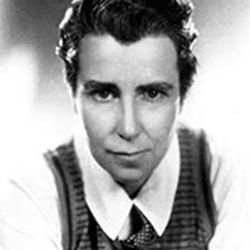Director, editor, and screenwriter, Dorothy Arzner is one of the most prolific woman studio directors in the history of American cinema. She was the only woman directing feature-length studio films in Hollywood in the 1930s. Her career spanned from 1919 to 1943. Arzner was one of the few directors to successfully continue their career from the silent era into the era of sound in film. She worked on a total of 25 films, many of which have received significant attention from feminist film critics and queer theorists. Arzner began her career in the film industry typing scripts for the Famous Players-Lasky Corporation, later known as Paramount. After six months, she became the chief editor in charge of film cutting and editing. This led to Arzner’s first “big picture,” cutting and editing Blood and Sand (1922). This was the first film for which she undertook some of the filming.
Eventually, Arzner was entrusted with directing feature films at Paramount, all of which garnered much success. Some of these silent films include: Fashions for Women (1927), Ten Modern Commandments (1927), Get Your Man (1927), and Manhattan Cocktail (1928). Because of her triumphs, Paramount bestowed upon Arzner the directing role for the studio’s first sound film, The Wild Party (1929) starring Clara Bow.
Arzner left Hollywood in the 1940s and was all but forgotten until the 1970s, when feminist film theorists dug up her work, and she was brought to new recognition. Much of Arzner’s legacy lies in feminist critics analyzing her work such as Christopher Strong (1933) and Dance, Girl, Dance (1940). Christopher Strong is about female aviator, Lady Cynthia Darrington (Katharine Hepburn) and Parliament member, Sir Christopher Strong (Colin Clive). The two characters meet at a party and become instantly attracted to one another. Azrner’s direction leads you to believe Lady Darrington is willing to tie down her free spirit for love, but this dramatically changes. Rather than sacrifice her independence for a man, Lady Darrington broke the world record for height achieved in air, and removed her oxygen mask, causing her to lose consciousness and send the plane into a deathly nosedive.
In Dance, Girl, Dance, Arzner explores female stereotypes, such as women being just a “spectacle” for men and are either wrapped up in sexuality, grace, or innocence. The movie centers around two good friends, Judy and Bubbles who are both dancers. While Bubbles uses her good looks and sassy personality (sexuality) to get jobs, Judy is a dedicated ballerina (grace and innocence) and finds it more difficult to succeed in her chosen profession. Arzner’s Christopher Strong and Dance, Girl, Dance showcase the challenges women face while pursuing their passions and careers. It is for this reason, that Arzner’s work as a female pioneer in the early ages of Hollywood has become an important area of film.
